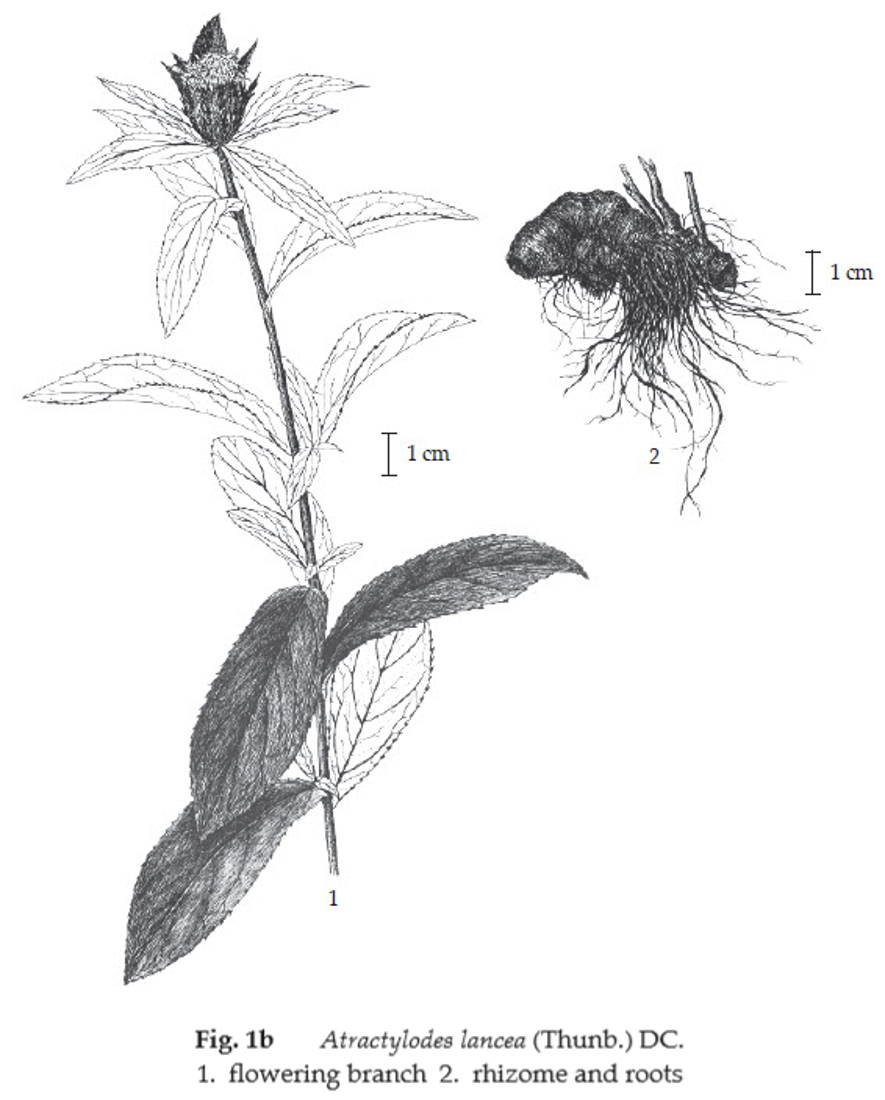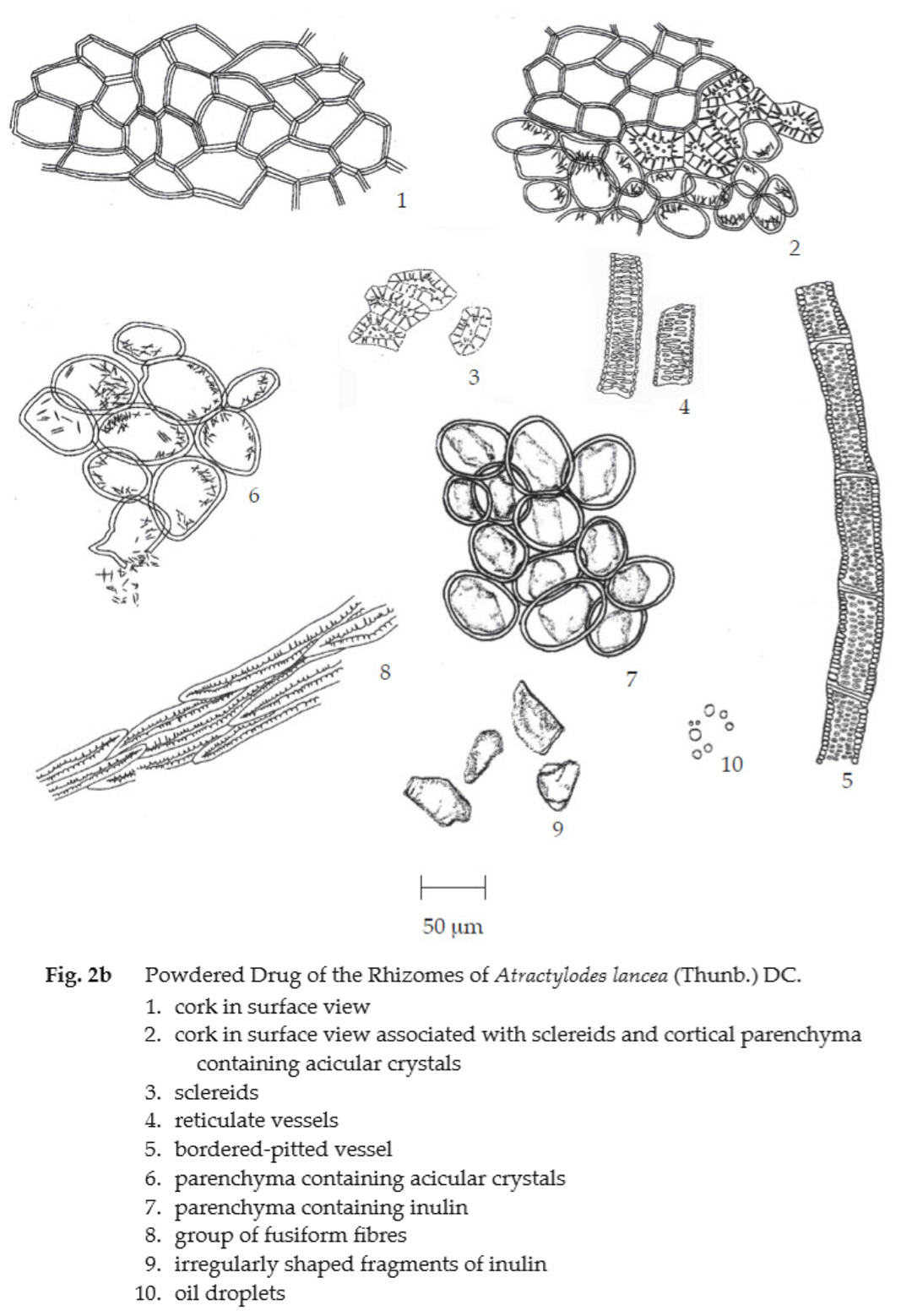ตำรามาตรฐานยาสมุนไพรไทย
Thai Herbal Pharmacopoeia
สำนักยาและวัตถุเสพติด กรมวิทยาศาสตร์การแพทย์ กระทรวงสาธารณสุข
Bureau of Drug and Narcotic, Department of Medical Sciences, Ministry of Public Health(Tinospora crispa (L.) Hook.f. & Thomson)
(Nelumbo nucifera Gaertn.)
(Centella asiatica (L.) Urb.)
(Centella Dry Extract)
(Centella Cream)
(Mesua ferrea L.)
(Piper sarmentosum Roxb.)
(Piper sarmentosum Roxb.)
(Pterocarpus santalinus L. f.)
(Santalum album L.)
(Senna tora (L.) Roxb.)
(Senna alata (L.) Roxb.)
(Senna Alata Tea)
(Piper retrofractum Vahl)
(Myristica fragrans Houtt)
(Andrographis paniculata (Burm. f.) Nees)
(Andrographis Capsules)
(Allium ascalonicum L.)
(Ocimum tenuiflorum L.)
(Curcuma longa L.)
(Turmeric Capsules)
(Turmeric Dry Extract)
(Turmeric Dry Extract Capsules)
(Arcangelisia flava (L.) Merr.)
(Curcuma sp.)
Harrisonia perforata (Blanco) Merr.
(Aristolochia pierrei Lecomte)
(Zingiber officinale Roscoe)
(Ginger Capsules)
(Ginger Tea)
(Cassia fistula L.)
(Nardostachys jatamansi (D. Don) DC.)
(Angelica sinensis (Oliv.) Diels)
Artemisia annua L.
(Ligusticum sinense Oliv. cv. Chuanxiong)
(Neopicrorhiza scrophulariiflora Pennell)
(Atractylodes lancea (Thunb.) DC.)
(Aucklandia lappa Decne)
(Terminalia chebula Retz.)
(Angelica dahurica (Hoffm.) Benth. & Hook. f. ex Franch. & Sav. var. dahurica)
(Kaempferia parviflora Wall. ex Baker)
(Hibiscus sabdariffa L.)
(Roselle Tea)
(Allium sativum L.)
(Zingiber zerumbet (L.) Sm.)
(Wurfbainia testacea (Ridl.) Škorničk.& A. D. Poulsen)
(Cannabis sativa L.)
(Myristica fragrans Houtt)
(Dracaena cochinchinensis (Lour.) S. C. Chen)
(Ficus racemosa L.)
(Hyptis suaveolens (L.) Poit.)
Clerodendrum indicum (L.) Kuntze
(Phyllanthus emblica L.)
(Citrus hystrix DC.)
(Citrus hystrix DC.)
(Areca catechu L.)
(Momordica charantia L.)
Moringa oleifera Lam.
(Aegle marmelos (L.) Corrêa)
(Solanum trilobatum L.)
(Morus alba L.)
Gynostemma pentaphyllum(Thunb.)
Makino
(Clinacanthus nutans (Burm. f.) Lindau)
(Cissus quadrangularis L.)
(Mimusops elengi L.)
(Zingiber montanum (J. König) Link. ex A. Dietr.)
(Piper betle L.)
(Capsicum annuum L.)
(Capsicum Oleoresin)
(Capsicum Gel)
(Piper nigrum L.)
(Piper nigrum L.)
(Eurycoma longifolia Jack)
(Thunbergia laurifolia Lindl.)
(Piper wallichii (Miq.) Hand.-Mazz.)
Senna garrettiana (Craib) H. S. Irwin & Barneby
(Terminalia bellirica (Gaertn.) Roxb.)
(Terminalia chebula Retz.)
(Caesalpinia bonduc (L.) H. Roxb.)
(Tarlmounia elliptica (DC.) H. Rob., S. C. Keeley, Skvaria & R. Chan)
(Hog Creeper Vine Dry Extract Capsiles)
(Hog Creeper Vine Dry Extract)
(Brachypterum scandens (Roxb.) Miq.)
(Lepidium sativum L.)
(Nigella sativa L.)
(Cuminum cyminum L.)
(Foeniculum vulgare Mill.)
(Plantago ovata Forssk.)
(Pimpinella anisum L.)
(Carum carvi L.)
(Anethum graveolens L.)
(Trachyspermum ammi (L.) Sprague)
Albizia procera (Roxb.) Benth.
(Acorus calamus L.)
(Tiliacora triandra (Colebr.) Diels)
Cyanthillium cinereum (L.) H. Rob.
(Orthosiphon aristatus (Blume) Miq.)
Murdannia loriformis (Hassk.) R. S. Rao & Kammathy
(Capparis micracantha DC.)
(Chrysopogon zizanioides (L.) Roberty)
(Cyperus rotundus L.)
(Cannabis sativa L.)
(Syzygium aromaticum (L.) Merr. & L. M. Perry)
(Boesenbergia rotunda (L.) Mansf.)
(Acanthus ebracteatus Vahl)
(Acanthus ilicifolius L.)
(Kaempferia galanga L.)
(Curcuma comosa Roxb.)
Betula alnoides Buch.-Ham. ex D. Don
Cannabis sativa L.
Carthamus tinctorius L
Mitragyna speciosa (Korth.) Havil
Mallotus repandus (Rottler) Müll. Arg
Azadirachta indica A. Juss. var. siamensis Valeton
Azadirachta indica A. Juss. var. siamensis Valeton
Punica granatum L.
Rhinacanthus nasutus (L.) Kurz
Baliospermum solanifolium (Burm.) Suresh
Curcuma aeruginosa Roxb
Boesenbergia kingii Mood & L. M. Prince
Senegalia rugata (Lam.) Britton & Rose
Acacia concinna (Willd.) DC.
Senegalia rugata (Lam.) Britton & Rose
Acacia concinna (Willd.) DC.
Senna alexandriana Mill. var. alexandriana
Cassia acutifolia Delile, Cassia angustifolia Vahl
Butea superba Roxb. ex Willd.
[Plaso superba (Roxb. ex Willd.) Kuntze, Rudolphia superba (Roxb. ex Willd.) Poir.
Pueraria candollei Graham
ex Benth. var. mirifica (Airy Shaw & Suvat.) Niyomdham
Streblus asper Lour.
Suregada multiflora (A. Juss.) Baill. (Gelonium
multiflorum A. Juss.
Atractylodes Lancea Rhizome is the dried rhizome of Atractylodes lancea (Thunb.) DC. (A. chinensis (Bunge) Koidz.) (Family Compositae), Herbarium Specimen Number: see Additional information 1, Crude Drug Number: DMSc 1149.
Constituents Atractylodes Lancea Rhizome contains volatile oil, of which atractylodin and β-eudesmol are its major components. It also contains sesquiterpenoids (e.g., atractylenolides), triterpenoids, sterols, etc.
Description of the plant (Figs. 1a, 1b) Perennial herb, (15–)30 to 100 cm tall; rhizome thick, prostrate or ascending, with numerous adventitious roots of even thickness; stem solitary or fascicled, unbranched or apically few-branched, sparsely arachnoid or glabrous. Leaves simple, alternate, green, concolorous, rigidly papery, glabrous, margin spiniform ciliate or spinosely toothed; basal leaves withered at anthesis; lower leaves subsessile to petiolate; petiole to 3.5 cm long; leaf blade 8 to 12 cm long, 5 to 8 cm wide, 3- to 5(–9)-pinnatifid or -binnatipartite, sometimes entire, lateral lobes elliptic, narrowly elliptic, or obovate-elliptic, terminal lobe orbicular, obovate, obliquely ovate, ovate, or elliptic; middle leaves with petiole 0.5 to 2.5 cm long, leaf blade obovate, narrowly obovate, obovate-elliptic, narrowly elliptic, or oblanceolate, base cuneate-attenuate, margin entire or basally sometimes with 1 or 2 triangular and spinose teeth; upper leaves sometimes triangular, with 1 or 2 spinose teeth; leaves subtending inflorescence pinnatipartite to pinnatisect. Capitula 1 to several, in terminal corymb; involucre campanulate, 1 to 1.5 cm in diameter; phyllaries 5 to 7 rows, margin sparsely arachnoid, apex rounded to obtuse, outer and outermost ones ovate to ovate-lanceolate, 3 to 6 mm long, 1.5 to 3 mm wide, middle ones ovate, ovate-elliptic, or elliptic, 6 to 10 mm long, 3 to 4 mm wide, inner ones elliptic to linear, 1.1 to 1.2 cm long, 0.2 to 0.3 mm wide, apically sometimes turning red; marginal florets pistillate; disc florets bisexual, corolla white, slightly tinged with purple, basal tube 9 mm long. Achene obovoid; pappus brown to dirty-white, 7 to 8 mm long.
Description Odour, characteristic; taste, sweetish, pungent and bitter.
Macroscopical (Fig. 1a) Irregularly moniliform or nodular-cylindrical, somewhat curved, occasionally branched, 3 to 10 cm long, 1 to 2 cm in diameter. Externally greyish brown, wrinkled, transversely twisted-lined, with remains of rootlets, and stem scars or remains of stems attached at apex. Texture compact, fracture yellowish white or greyish white, scattered with many orange-yellow or brownish red oil cavities and crystallized out as white fine needle crystals after exposing for a long time.
Microscopical (Figs. 2a, 2b) Transverse section of the rhizome shows periderm, cortex, phloem, xylem and pith. Periderm, several rows of rectangular corks cells and thick-walled sclereids. Cortex, narrow zone of parenchyma cells and cracked cavities. Phloem composed of phloem parenchyma cells, phloem rays and cracked cavities. Xylem comprised vessels, groups of fibres, xylem rays, and cracked cavities. Schizogenous brown oil cavities, scattered in cortex, phloem, xylem, and pith. Pith, numerous polygonal parenchyma cells.




Atractylodes Lancea Rhizome in powder possesses the diagnostic microscopical characters of the unground drug. Cork associated with sclereids, parenchyma cells containing oil droplets, irregularly shaped fragment of inulin, acicular crystals, and reticulate and bordered-pitted vessels are commonly observed.
Warning It should be used with caution in patients with loose, watery stools.
Additional information
1. Atractylodes lancea plant is not native to nor commercially cultivated in Thailand. The plant yielding atractylodes lancea rhizome is here referred to the herbarium specimen, Herbarium Tsumara Laboratory 24217, deposited at the Herbarium Tsumara Laboratory, Japan. The photographic illustration of the specimen can be seen at the Department of Medical Sciences Herbarium (DMSC), Nonthaburi, Thailand.
2. It is commonly used with other herbal drugs in Thai traditional herbal preparations.
Packaging and storage Atractylodes Lancea Rhizome shall be kept in well-closed containers, preferably of metal or glass, protected from light and stored in a cool and dry place.
Identification
A. Reflux 1 g of the sample, in powder, with 10 mL of ethanol for 30 minutes and filter. Evaporate 2 mL of the filtrate to dryness. Dissolve the residue in 2 mL of acetic anhydride and then slowly add 1 mL of sulfuric acid to make two layers: a purple colour appears in the upper layer.
B. Carry out the test as described in the “Thin-Layer Chromatography” (Appendix 3.1), using silica gel GF254 as the coating substance and a mixture of 70 volumes of hexane, 20 volumes of acetone and 10 volumes of ethyl acetate as the mobile phase and allowing the solvent front to ascend 10 cm above the line of application. Apply to the plate as a band of 10 mm, 5 μL of the test solution prepared by refluxing 1 g of the sample, in powder, with 10 mL of dichloromethane for 30 minutes, filtering and evaporating the filtrate to dryness. Dissolve the residue in 1 mL of toluene. After removal of the plate, allow it to dry in air and examine under ultraviolet light (254 nm), marking the quenching bands. Subsequently examine the plate under ultraviolet light (366 nm) through the cut-off filter. Several fluorescent bands of different colours appear. Spray the plate with anisaldehyde TS and heat at 105° for 10 minutes. Several bands of different colours are observed (Table 1); see also Fig. 3.
Table 1 hRf Values of Components in Dichloromethane Extract of the Rhizomes of Atractylodes lancea (Thunb.) DC.
| Band | hRf Value | Detection | ||
| UV 254 | UV 366 | Anisaldehyde TS | ||
| 1 2 3 4 5 6 7 8 9 10 11 12 13 14 |
12-16 16-22 24-28 28-31 32-35 36-38 43-48 49-58 68-72 72-77 78-84 88-94 92-96 94-98 |
quenching quenching quenching - quenching - quenching quenching - quenching quenching - - - |
- - blue - - - - - blue - light orange - - - |
grey grey - grey - grey - green blue blue grey violet green violet |
Water Not more than 11.0 per cent v/w (Azeotropic Distillation Method, Appendix 4.12).
Foreign matter Not more than 7.0 per cent w/w (Appendix 7.2).
Acid-insoluble ash Not more than 1.5 per cent w/w (Appendix 7.6).
Total ash Not more than 7.0 per cent w/w (Appendix 7.7).
Ethanol-soluble extractive Not less than 12.0 per cent w/w (Appendix 7.12).
Water-soluble extractive Not less than 35.0 per cent w/w (Appendix 7.12).
Volatile oil Not less than 1.4 per cent v/w (Appendix 7.3H). Use 25 g, in coarse powder, freshly prepared and accurately weighed. Use 250 mL of water as the distillation liquid and a 500-mL round-bottomed flask. Distil at a rate of 2 to 3 mL per minute for 5 hours. Use 2.0 mL of xylene in the graduated tube.
Dose 3 to 9 g, as a decoction, a day.
